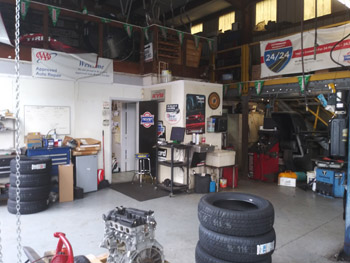All Categories
Featured
Correct tire upkeep is essential to prolonging the life of your car and making certain a smooth and secure driving experience. 2 of the most crucial tire solutions are tire turning and alignment. These services not only stop early tire wear however likewise improve handling, gas effectiveness, and general safety. If you're unfamiliar with what tire turning and alignment entail, here's a thorough appearance at why they matter and exactly how they profit your automobile.
What Is Tire Rotation? Tire rotation refers to relocating your tires from one position to another to ensure they put on uniformly. The factor tire turning is essential is due to the fact that not all tires use the very same way.
By turning your tires routinely, you can stabilize out the wear throughout all four tires. This aids them last much longer and allows for even more also traction, improving handling and stability. The majority of suppliers suggest turning your tires every 6,000 to 8,000 miles or according to the lorry's guidebook.
What Is Tire Placement? Tire alignment, likewise understood as wheel alignment, describes the procedure of changing the angles of your vehicle's wheels to satisfy the maker's requirements. The goal of placement is to make sure that all 4 tires are directing in the best instructions and at the correct angles, which enables for ideal handling, safety, and tire life.
There are three primary placement angles that are readjusted throughout a positioning check:

Camber: The tilt of the wheels when watched from the front. If the camber is off, it can cause unequal tire wear, as the tire will not make full call with the roadway surface. Caster: The angle of the guiding axis when viewed from the side. Correct caster alignment guarantees that your automobile is stable when driving straight and that your guiding wheel go back to its regular setting after a turn. Toe: The angle at which the tires aim inward or outward when watched from above. Inaccurate toe placement can cause the tires to drag, bring about irregular wear and minimized fuel performance. Imbalance can happen with time because of regular driving or from striking obstacles like visuals or craters. If your positioning is off, it is essential to obtain it inspected and dealt with to prevent concerns later on.
Why Tire Turning and Placement Matter. Increased Tire Life:. Regular tire rotation makes certain even tire wear, helping you obtain one of the most gas mileage out of your tires. Irregular wear can trigger you to change tires too soon, which can be pricey. When your tires wear equally, they last much longer, conserving you money in the long term.
Enhanced Car Handling:. Correct placement keeps your car driving straight and steady, particularly at greater rates. Imbalance can cause your auto to draw away, making it tougher to guide. By maintaining your tires lined up, you guarantee your car manages much more smoothly and naturally.
Improved Security:. Tires that are not revolved or lined up appropriately can use unevenly, impacting just how well your lorry quits and corners. Misaligned tires or tires with uneven wear patterns may cause decreased traction, especially in damp or icy problems, leading to a greater danger of mishaps.
Better Gas Efficiency:. Tires that are misaligned can create rolling resistance, suggesting your engine has to work harder to relocate the auto. This enhances fuel intake and reduces your vehicle's fuel effectiveness. Correct tire alignment minimizes rolling resistance, which can enhance gas mileage.
Indicators Your Tires Required Rotation or Placement. While it's necessary to remain on top of routine tire turnings and positionings, there are a couple of signs that may indicate your tires require interest:
Uneven Put On: If you see that one tire is a lot more worn than the others, it's likely time for a rotation. Guiding Pull: If your auto draws to one side or feels off-center, it might be an indication of misalignment. Vibrations: If you feel vibrations in the steering wheel or the automobile, it might be as a result of a positioning problem. Noisy Tires: Screeching or loud tires could suggest inappropriate rotation or imbalance. If you observe any one of these indicators, it is necessary to get your tires examined by a specialist.
Exactly How Frequently Should You Rotate and Align Your Tires? Tire turning ought to generally be done every 6,000 to 8,000 miles, though this can vary based on your driving problems and the sort of automobile you drive. It's additionally an excellent idea to have your tires turned whenever you obtain an oil adjustment.
For alignment, you should have your tires straightened every 1-2 years, or much more often if you notice any kind of concerns with dealing with or uneven tire wear. If you hit a large fracture or visual, it's a good idea to obtain a positioning inspect today.
Verdict: Normal Upkeep for Optimum Efficiency. Tire rotation and placement are two simple however crucial services that maintain your car running smoothly, effectively, and safely. By revolving your tires on a regular basis and maintaining your wheels properly aligned, you can expand the life of your tires, improve handling, and enjoy much better fuel effectiveness.
Latest Posts
Uncover Exceptional Car Repair Services offered by Montclare Auto Repair – Reliable Repairs Await
Discover Your Wyoming Banking Partner – The Key to Better Banking in Wyoming
Discover WyHy FCU – Top Benefits for Your Financial Success
More
Latest Posts
Uncover Exceptional Car Repair Services offered by Montclare Auto Repair – Reliable Repairs Await
Discover Your Wyoming Banking Partner – The Key to Better Banking in Wyoming
Discover WyHy FCU – Top Benefits for Your Financial Success
